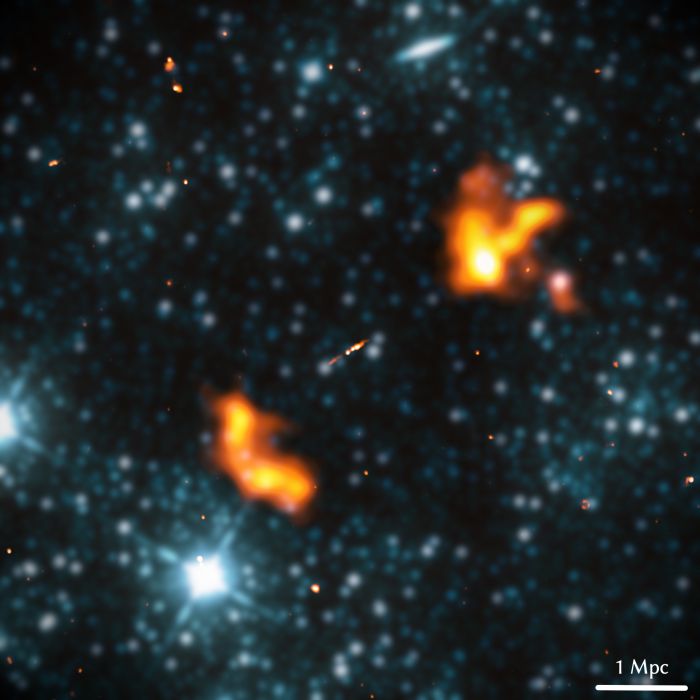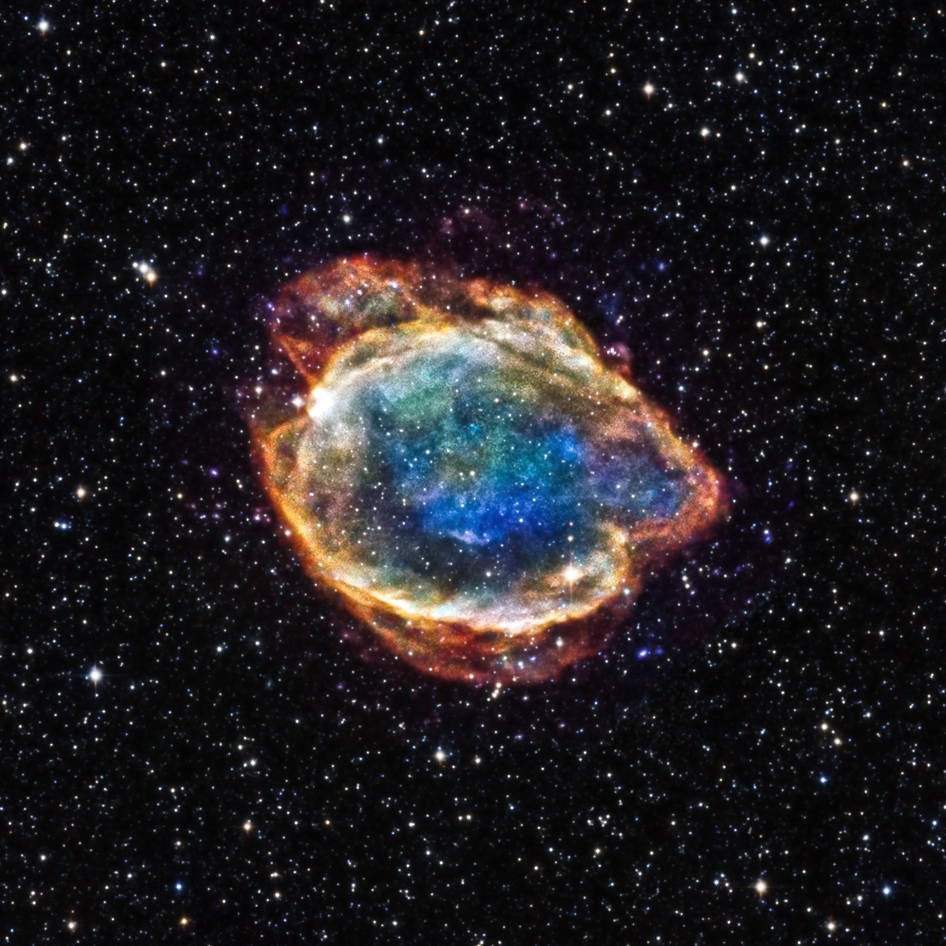Astronomers have found Alcyoneus which is a giant radio galaxy reaching 5 megaparsecs into space. That’s 16.3 million light-years long and constitutes the largest known structure of galactic origin.
Giant radio galaxies have colossal jets and lobes that originate from the galactic center.
These jets and lobes, interacting with the intergalactic medium, act as a synchrotron to accelerate electrons that produce radio emission.
It is claimed that astronomers know what produces the jets: an active supermassive black hole at the galactic center. The black hole is addressed as ‘active’ when it’s guzzling down (or ‘accreting’) material from a giant disk of material around it.
A small fraction of the material gets funneled from the inner region of the accretion disk to the poles, where it is blasted into space in the form of jets of ionized plasma, at massively high speeds.
These jets can travel large distances before spreading out into giant radio-emitting lobes.
This process is normal. The milky way also has these lobes. However, we don’t know why in some galaxies, they grow to gargantuan sizes, on megaparsec scales. These are called giant radio galaxies, and the most extreme examples could be key to understanding what drives their growth.

“If there exist host galaxy characteristics that are an important cause for giant radio galaxy growth, then the hosts of the largest giant radio galaxies are likely to possess them,” the researchers, led by astronomer Martijn Oei of Leiden Observatory in the Netherlands, explain in their preprint paper, which has been accepted for publication in Astronomy & Astrophysics.
“Similarly, if there exist particular large-scale environments that are highly conducive to giant radio galaxy growth, then the largest giant radio galaxies are likely to reside in them.”
The team looked in the data collected by the Low-Frequency ARray (LOFAR) in Europe, an interferometric network consisting of around 20,000 radio antennas, distributed throughout 52 locations across Europe.
The resulting images, they say, represent the most sensitive search ever conducted for radio galaxy lobes.
“We have discovered what is in projection the largest known structure made by a single galaxy – a giant radio galaxy with a projected proper length [of] 4.99 ± 0.04 megaparsecs. The true proper length is at least … 5.04 ± 0.05 megaparsecs,” they write.
Afterward, the researchers used the Sloan Digital Sky Survey to understand the host galaxy.

They found that it’s a normal elliptical galaxy, embedded in a filament of the cosmic web, clocking in at around 240 billion times the mass of the Sun, with a supermassive black hole at its center around 400 million times the mass of the Sun.
“Beyond geometry, Alcyoneus and its host are suspiciously ordinary: the total low-frequency luminosity density, stellar-mass, and supermassive black hole mass are all lower than, though similar to, those of the medial giant radio galaxies,” they say.
“Thus, very massive galaxies or central black holes are not necessary to grow large giants, and, if the observed state is representative of the source over its lifetime, neither is high radio power.”
The research has been accepted for publication in Astronomy & Astrophysics.


